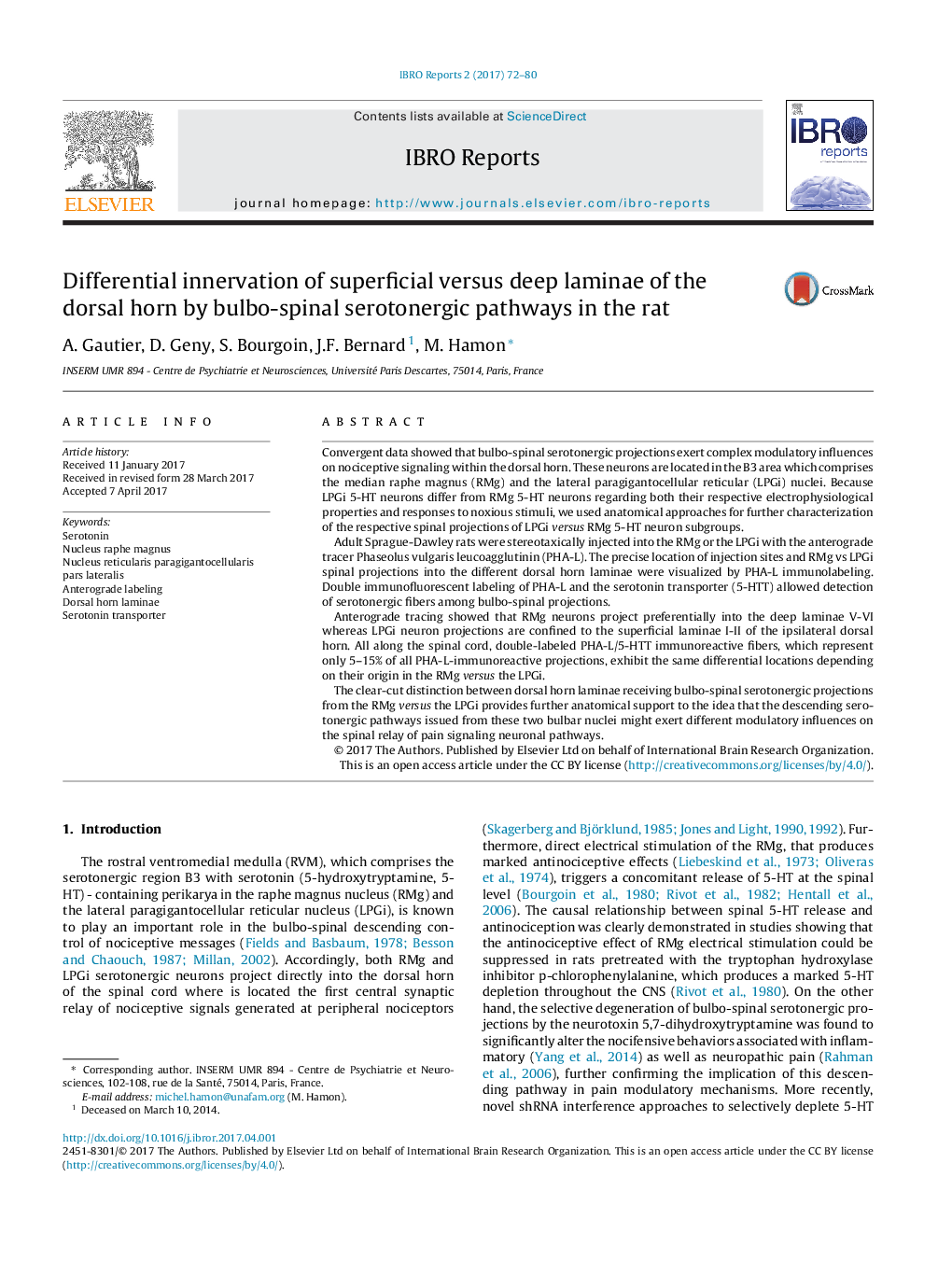| Article ID | Journal | Published Year | Pages | File Type |
|---|---|---|---|---|
| 5736439 | IBRO Reports | 2017 | 9 Pages |
â¢Anterograde tracing and 5-HT transporter immunochemistry allowed investigations of bulbo-spinal 5-HT projections in rats.â¢5-HT fibers represent â¼5% vs â¼15% of descending projections from n. raphe magnus vs n. paragigantocellularis, respectively.â¢5-HT fibers from the n. raphe magnus project mainly into dorsal horn laminae V-VI, and to lower extent into laminae I-II.â¢In contrast, 5-HT fibers from the n. paragigantocellularis project densely and exclusively into superficial laminae I-II.â¢These anatomical data suggest that spinal 5-HT from raphe magnus vs paragigantocellularis n. exert distinct pain controls.
Convergent data showed that bulbo-spinal serotonergic projections exert complex modulatory influences on nociceptive signaling within the dorsal horn. These neurons are located in the B3 area which comprises the median raphe magnus (RMg) and the lateral paragigantocellular reticular (LPGi) nuclei. Because LPGi 5-HT neurons differ from RMg 5-HT neurons regarding both their respective electrophysiological properties and responses to noxious stimuli, we used anatomical approaches for further characterization of the respective spinal projections of LPGi versus RMg 5-HT neuron subgroups.Adult Sprague-Dawley rats were stereotaxically injected into the RMg or the LPGi with the anterograde tracer Phaseolus vulgaris leucoagglutinin (PHA-L). The precise location of injection sites and RMg vs LPGi spinal projections into the different dorsal horn laminae were visualized by PHA-L immunolabeling. Double immunofluorescent labeling of PHA-L and the serotonin transporter (5-HTT) allowed detection of serotonergic fibers among bulbo-spinal projections.Anterograde tracing showed that RMg neurons project preferentially into the deep laminae V-VI whereas LPGi neuron projections are confined to the superficial laminae I-II of the ipsilateral dorsal horn. All along the spinal cord, double-labeled PHA-L/5-HTT immunoreactive fibers, which represent only 5-15% of all PHA-L-immunoreactive projections, exhibit the same differential locations depending on their origin in the RMg versus the LPGi.The clear-cut distinction between dorsal horn laminae receiving bulbo-spinal serotonergic projections from the RMg versus the LPGi provides further anatomical support to the idea that the descending serotonergic pathways issued from these two bulbar nuclei might exert different modulatory influences on the spinal relay of pain signaling neuronal pathways.
